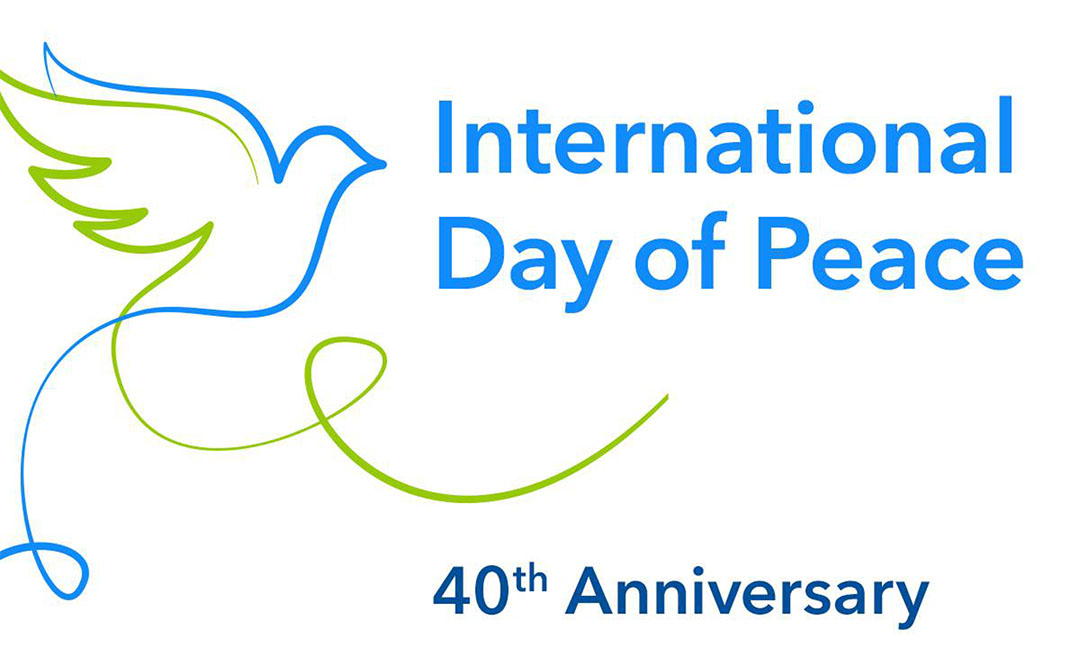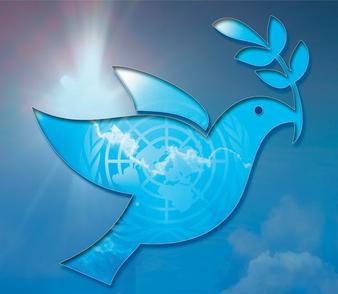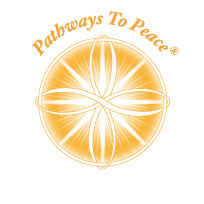
40 years ago, people around the world came together in San Franscisco, the birthplace of the United Nations, to celebrate the passage of the United Nations resolution establishing the
International Day of Peace
People in that gathering were inspired to see Peace, know Peace, and to bring Peace into their lives.
40 Years later, on Peace Day, September 21st, 2024, we’re coming together again, and
You’re Invited
Please join us on September 21st, 2024, from 11:00 am – 2:00 pm PT in the SF Civic Center Plaza
Are you ready for more peace? Come join us!
Quality entertainment for the whole family
Free and open to the public
Hosted by Pathways To Peace with many local and international sponsors
Sponsorship Opportunities
Corporate Sponsorship
For More Information Contact:
David Wick, President
davidwick111@gmail.com
+1 (541-552-1061
Tezikiah Gabriel, Executive Director
tez@pathwaystopeace.org
Tel: +1 (651) 357-4436
Rotary Club Sponsorship
Organizational Sponsorship
For More Information Contact:
Tezikiah Gabriel, Executive Director
tez@pathwaystopeace.org
Tel: +1 (651) 357-4436
Please Support This Special Anniversary Celebration
Donate Here


International Day of Peace Origins
At its 36th session, in 1981, the United Nations General Assembly, re-calling that the promotion of peace, both at the international and the national level, is among the main purposes of the United Nations, in conformity with its Charter, decided that it would be appropriate “to devote a specific time to concentrate the efforts of the United Nations and its Member States, as well as of the whole of mankind, to promoting the ideals of peace and to giving positive evidence of their commitment to peace in all viable ways”.
The General Assembly unanimously adopted on November 30, 1981 and declared in Resolution 36/67, that the opening of its annual session in September should be officially dedicated and observed as the International Day of Peace, devoted “to commemorating and strengthening the ideals of peace both within and among all nations and peoples.” Pathways To Peace played an important role in the inspiration and adoption of this International Day of Peace resolution.
The first International Day of Peace was observed at United Nations Headquarters in New York on 21 September 1982, the opening day of the 37th session of the General Assembly. At the start of the session, delegates stood for the traditional minute of silence in observance of the Day.
In 1983, Robert Muller, then Assistant Secretary-General of the United Nations, approved the initiative of Pathways To Peace (PTP) Founder and President Avon Mattison to coordinate the International Day of Peace with members of civil society representing diverse organizations to take place in San Francisco.
At that time, PTP convened representatives of diverse backgrounds, organizations, religions, etc. in San Francisco (birthplace of the United Nations) to plan a co-operative event in observance of the International Day of Peace. The intention was to design a prototype of co-operation that could be adapted by citizens, organizations, and cities in other parts of the world.
After a year of planning and organizing, the International Day of Peace was celebrated in San Francisco’s Civic Plaza on September 18, 1984. The citizens of San Francisco chose two mottos for the Day: “E Pluribus Unum” — Unity in Diversity (“Out of Many, One”) and “Peace begins with oneself, living in harmony with one another and the Earth.”
Following the guidelines of the U.N. resolution and Dr. Muller’s counsel, Peace Day was expanded into a state of mind and a commitment to co-operation through a “grassroots”, or citizens, movement. In 1984 citizens in over 52 countries responded to the invitation from San Francisco to participate in this Day, and the media in several countries reported on the activities.
On that Day, Dr. Muller sent a telegram with the Secretary-General’s message which keynoted the observance in San Francisco, and graciously added these words of encouragement to local citizens: “I congratulate you on your wonderful work. You have helped to bring about an historic event.” Diane Feinstein, San Francisco’s Mayor said, “I applaud your efforts to bring together everyone in our city, the birthplace of the United Nations, in this historic, worldwide peace event….”
One purpose of the Peace Day initiative was to foster co-operation at all levels of the global community and to demonstrate the difference each individual, group, organization, nation makes when acting in concert with one another… enough of a difference to change the course of history!
This local-global day highlights PRACTICAL PEACE in all areas of human endeavor and gives evidence of the living presence of peace. It serves as a reminder of our permanent commitment to peace, above all interests and differences of any kind, and gives positive evidence to that commitment through actions of co-operation. Peace Day is an opportunity to demonstrate “PEACE” in its multiple expressions, and to live peacefully.
On 28 September 2001 the UN General Assembly adopted Resolution 55/282 establishing 21 September of every year as the fixed date for the observance of the International Day of Peace. It was also declared that the International Day of Peace shall be observed as a day of global ceasefire and non-violence, an invitation to all nations and people to honor a cessation of hostilities for the duration of the Day.
“Our organization was founded on the pursuit of peace.
Peace is our raison d’être.” (the most important purpose for existence)
UN Secretary-General’s remarks to the General Assembly on Priorities for 2024
António Guterres
07 February 2024
 The International Day of Peace, marked every year on September 21, is a global observance when individuals, organizations, communities, nations and governments highlight efforts to end conflict and promote peace. Established by UN resolution in 1981, The International Day of Peace (Peace Day) has grown to include hundreds of millions of people around the world participating in many types of events. People or groups can participate in an established event, or they can initiate their own observances. Peace Day observances, events and ideas include:
The International Day of Peace, marked every year on September 21, is a global observance when individuals, organizations, communities, nations and governments highlight efforts to end conflict and promote peace. Established by UN resolution in 1981, The International Day of Peace (Peace Day) has grown to include hundreds of millions of people around the world participating in many types of events. People or groups can participate in an established event, or they can initiate their own observances. Peace Day observances, events and ideas include:
-
The Secretary General of The United Nations asking all people, all over the world, to join together at noon in all time zones in one Minute of Silence.
-
The UN coordinating cease fires during which non-government organizations provide humanitarian aid to civilian populations affected by conflicts.
-
The UN conducting ceremonies at its headquarters and other facilities to create a spirit of peace for all people.
-
Thousands of International Day of Peace (IDP) Vigils in nations all over the planet.
-
People volunteering for local causes: soup kitchens, homeless shelters, schools, hospitals, nursing homes, environmental projects, literacy programs, animal rights programs, etc.
-
Religious organizations offer sermons, prayers, community service projects, and interfaith services.
-
Schools organizing Peace Day events during which students can express their ideas about Peace through art, music, theater, writing and discussions.
-
Organizations conducting workshops on Peacebuilding and conflict resolution – both globally and locally.
-
People attending cultural events celebrating their diverse heritages and sharing their common bonds.
-
Performers dedicating their work on September 21 to Peace; contributing a portion of the proceeds to Peacebuilding causes.
-
September 21 being proclaimed an official Day of Peace by Mayors, Governors or other officials.
-
Peacebuilding organizations using ‘Peace Day’ to promote their own causes and purposes.
-
Individuals joining year round Peacebuilding efforts, such as advocating for Depts, of Peace, supporting environmentally friendly energy sources, and promoting universal education and health care.
-
Individuals writing letters to newspapers and magazines about the International Day of Peace or other types of Peacebuilding activities.
-
Businesses allowing people to take time off to do volunteer work; or offering their own Peace Day events; or contributing to Peacebuilding organizations.
-
Organizations becoming involved by providing information through their newsletters as well as on-line.
-
People and organizations creating: seminars, peace parties, fundraisers, dances, walks, films, art & photo exhibits, essay contests, petitions, yoga classes, meditations, conferences, tree plantings, bell ringing, peace pole gatherings, blood drives, food drives, free health services, sporting events, auctions and more. Private observances include candle lighting ceremonies, family discussions, displaying banners, social networks and on-line activities. They also include helping neighbors, forgiving someone, and counting our blessings.
“Peace can achieve wonders that wars never will. Wars destroy. Peace builds. But in today’s troubled world, building peace is a conscious, bold and even radical act. It is humanity’s greatest responsibility. That responsibility belongs to us all – individually and collectively. In this difficult and divided moment, let’s meet that obligation for today and future generations. Starting here. Starting now. For my part, I can guarantee that I will never give up pushing for peace.”
UN Secretary-General’s remarks to the General Assembly on Priorities for 2024
António Guterres
07 February 2024

The Day of Peace has also become a catalyzing event. Here are a few examples of the types of activities worldwide which have been undertaken for the observance of the Day.
- Co-operation Workshops in schools around the world.
- Public observances of a moment of silence followed by a moment of sound such as school bells ringing.
- National radio or television broadcasts a moment of silence followed by a special message for the Day from a local or regional public official.
- Mayoral proclamations for the observance of the International Day of Peace.
- Special events in the fine arts such as art exhibits, art, poetry and essay competitions, songwriting and concerts dedicated to peace themes or to the specific theme of the International Day of Peace.
- Special lessons and programs in schools on peace issues, ringing school bells, peace parades, student letters to national leaders on peace, etc.
- Peace tree planting ceremonies; creation of peace gardens and peace parks.
- Peace Walks, relays and sporting events.
- Special staff programs on the Day in businesses and other organizations which focus on methods of co-operation and conflict resolution.
- Initiation of special one-day projects such as a citizen environmental clean-up Day program organized jointly by Sister Cities.
Statements from participants around the world about their visions for Peace Day and about the significance of this Day. Here is a summary of the most frequently mentioned ones:
Continue creating events which are inter-cultural, inter-generational, inter-faith and international, and which foster community at all levels.
Establish this Day’s theme as: “Practical Peace”, “Global Co-operation: A New Way of Thinking”, “A Whole New Way of Living”
For this one Day, put the children and youth in leadership and allow the spiritual elders to give counsel.
Provide a convergence point for co-operation with the United Nations among grassroots organizations and programs.
Create a focal point for a growing shift in consciousness from Global War to Peace with Earth.
On this occasion, may we live peace for this one Day. Let us use the theme: “Peace begins with oneself, living in harmony with one another and with the Earth.”
Broadcast co-operative actions that are making a difference in the QUALITY-OF-LIFE Highlight goodwill activities that transcend boundaries locally, nationally, regionally, globally.
Enable the youth to be spokespersons and leaders in all activities.
Let this become our universal Day of Peace when all hostilities cease, and when all people commit to living in harmony with one another and with the Earth.
Commit to at least one extra day of voluntary service in one’s own community.
